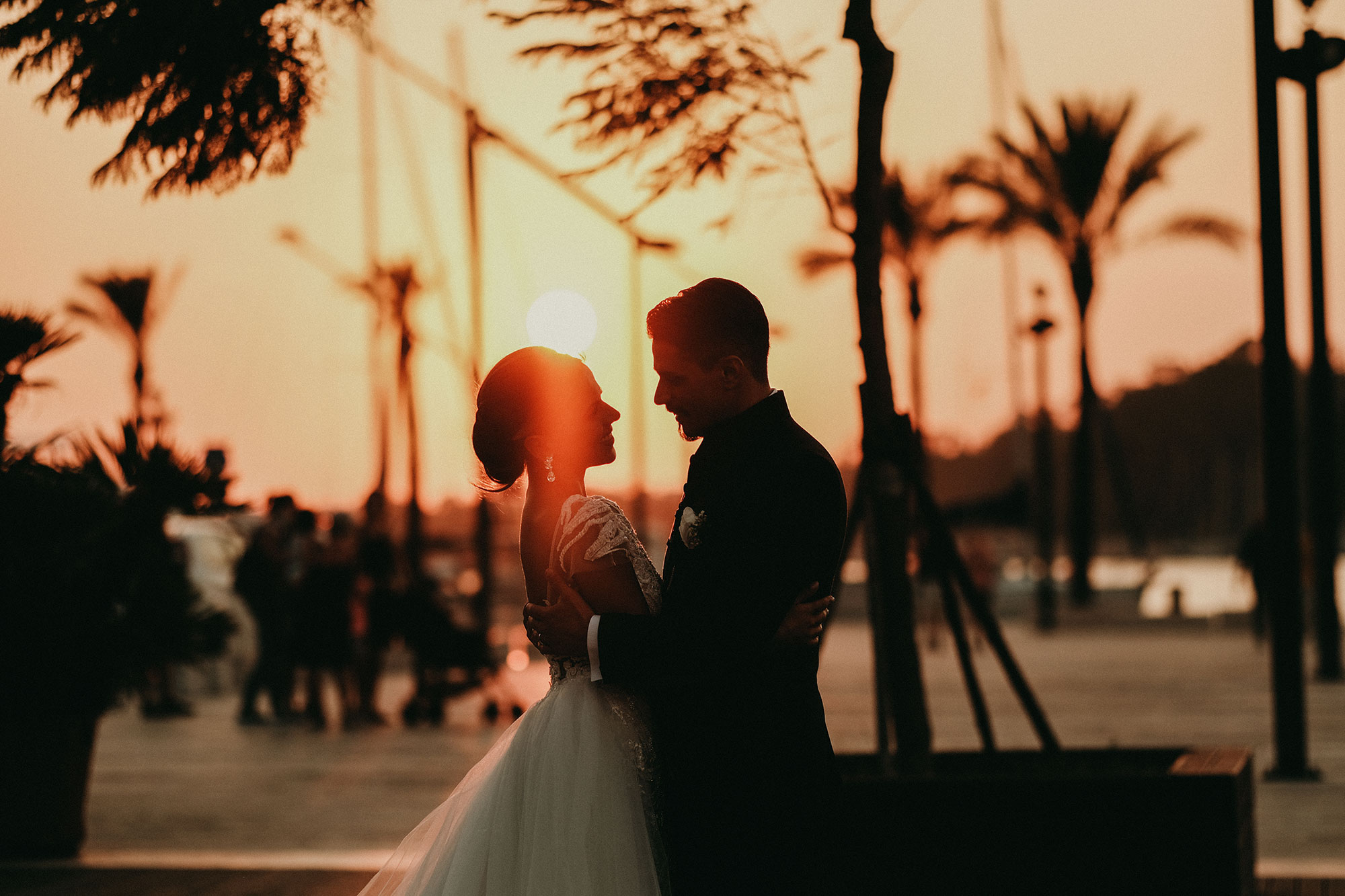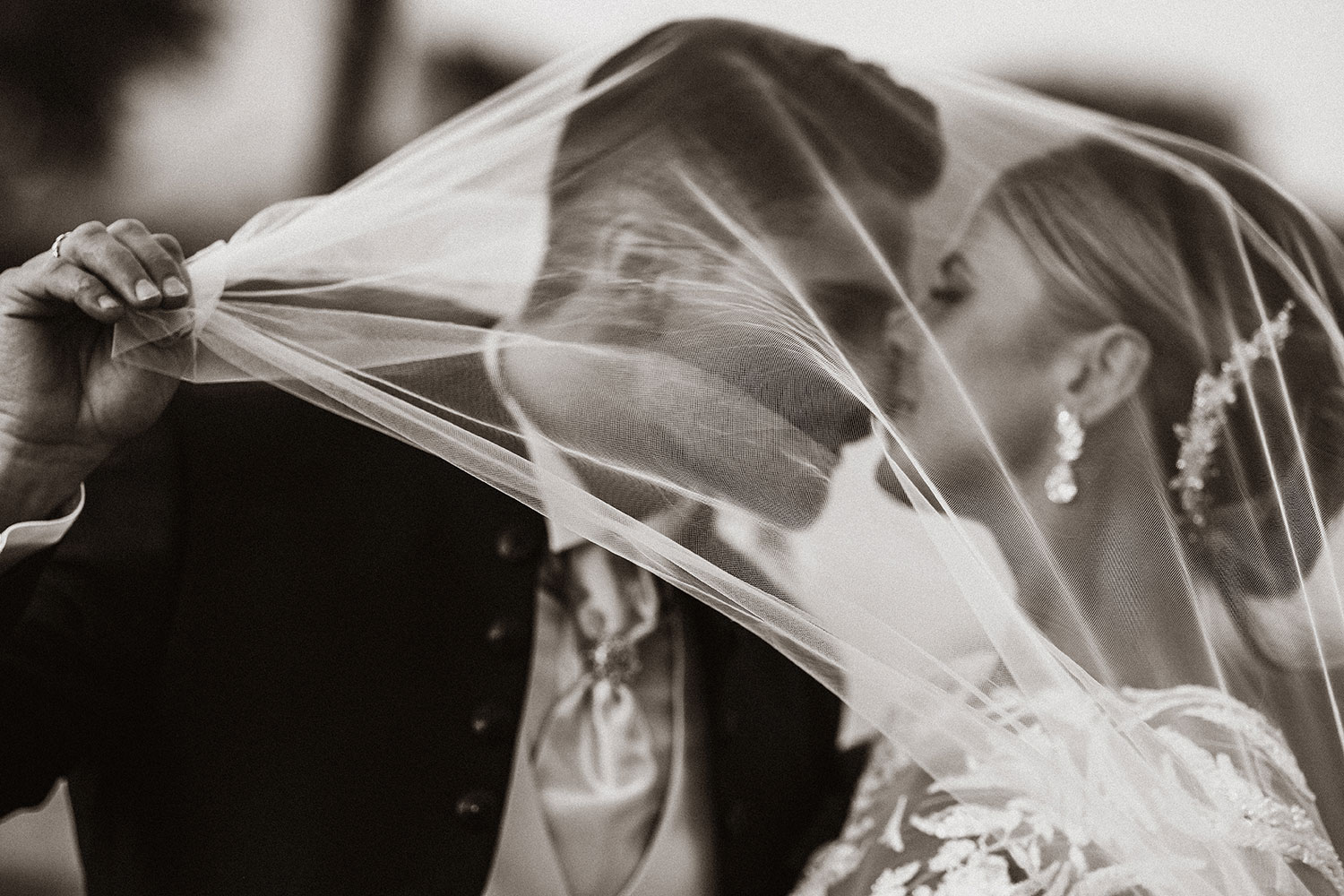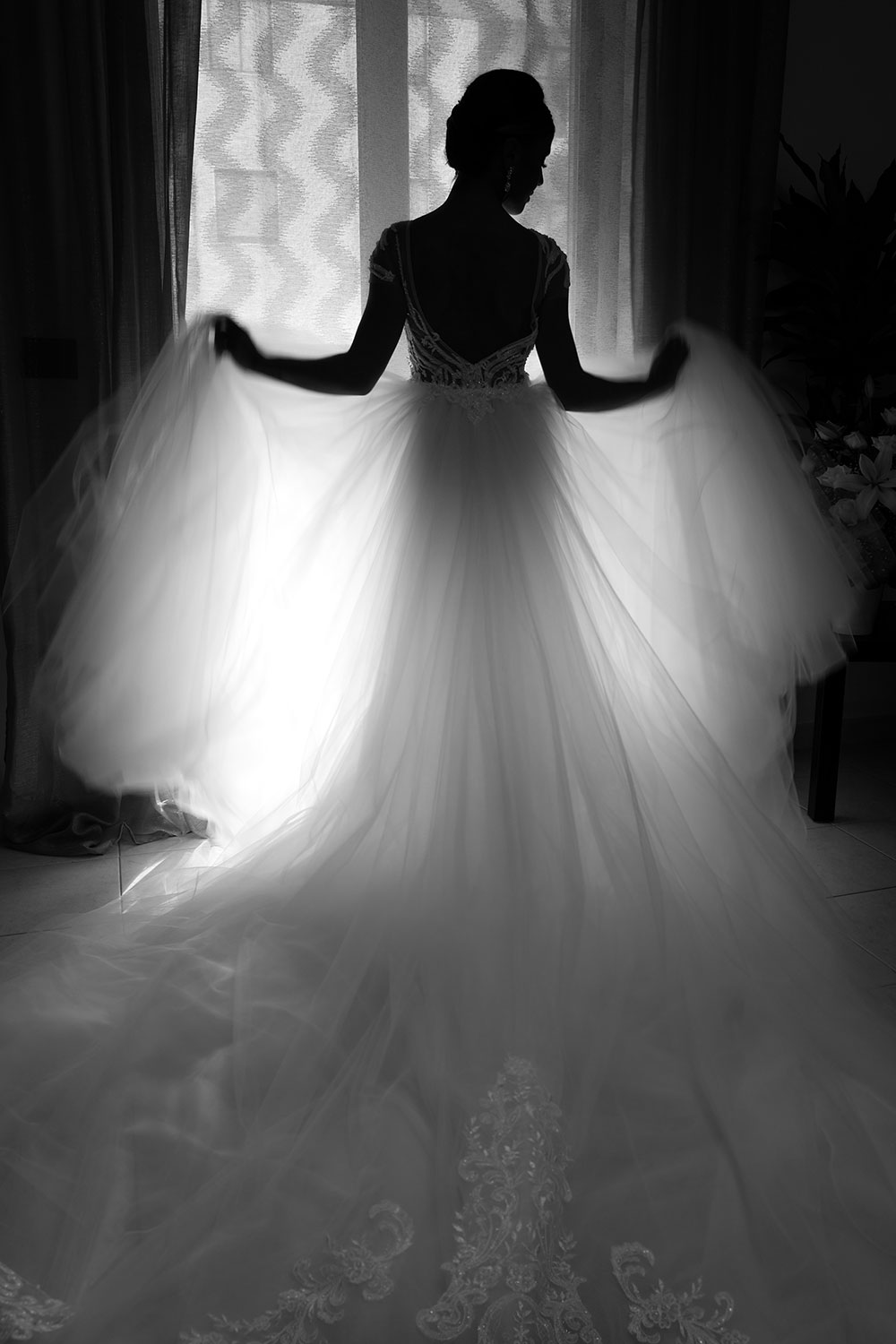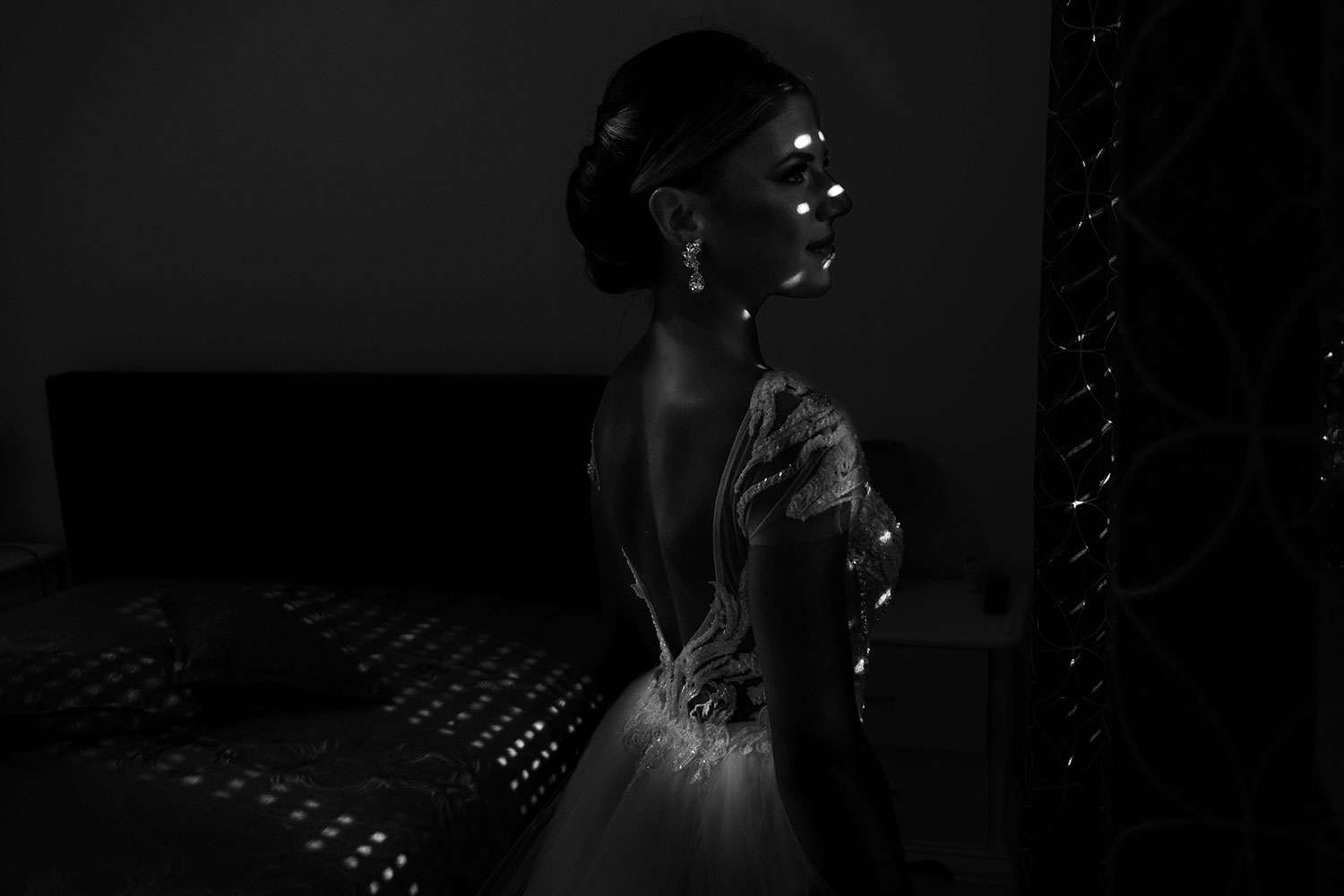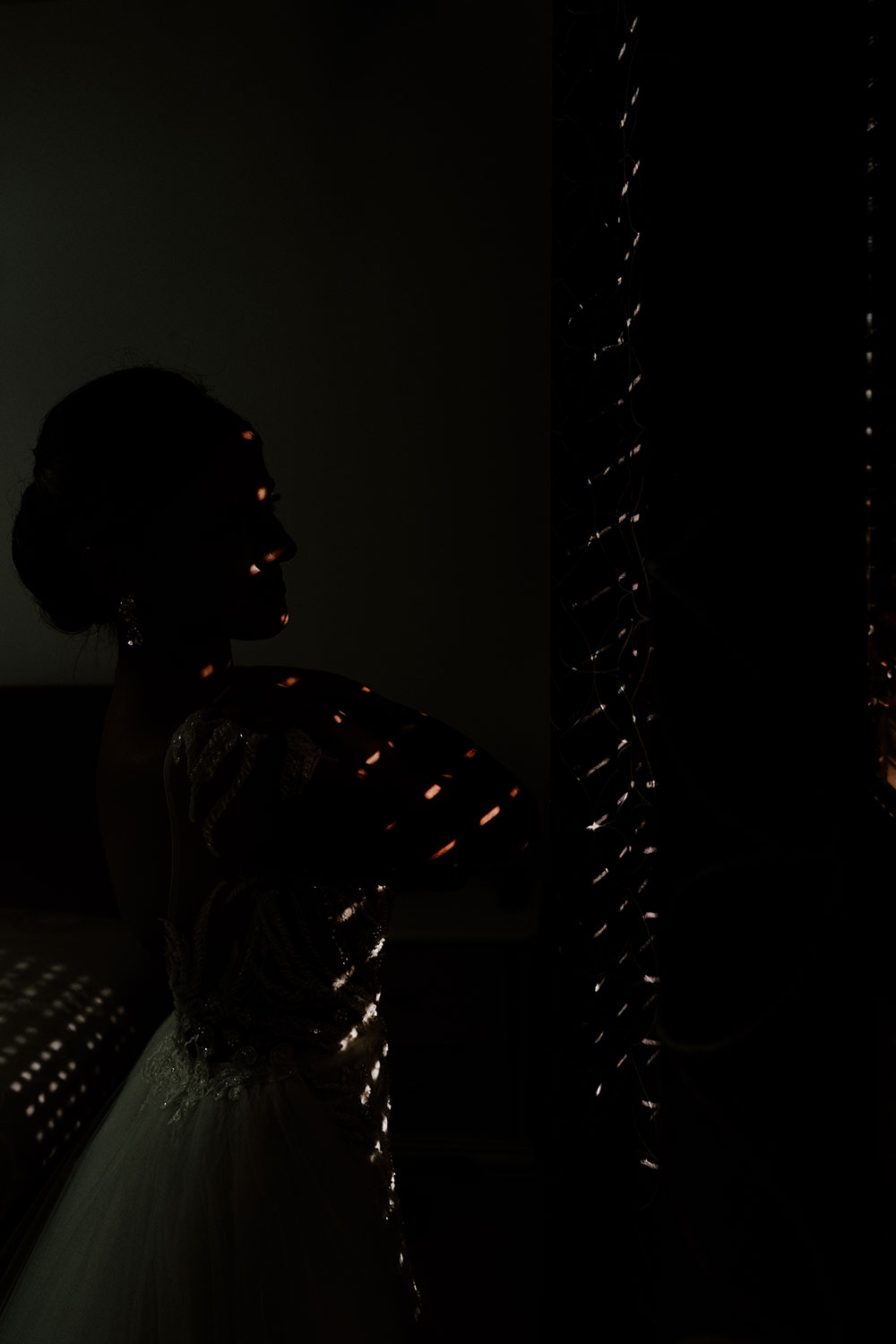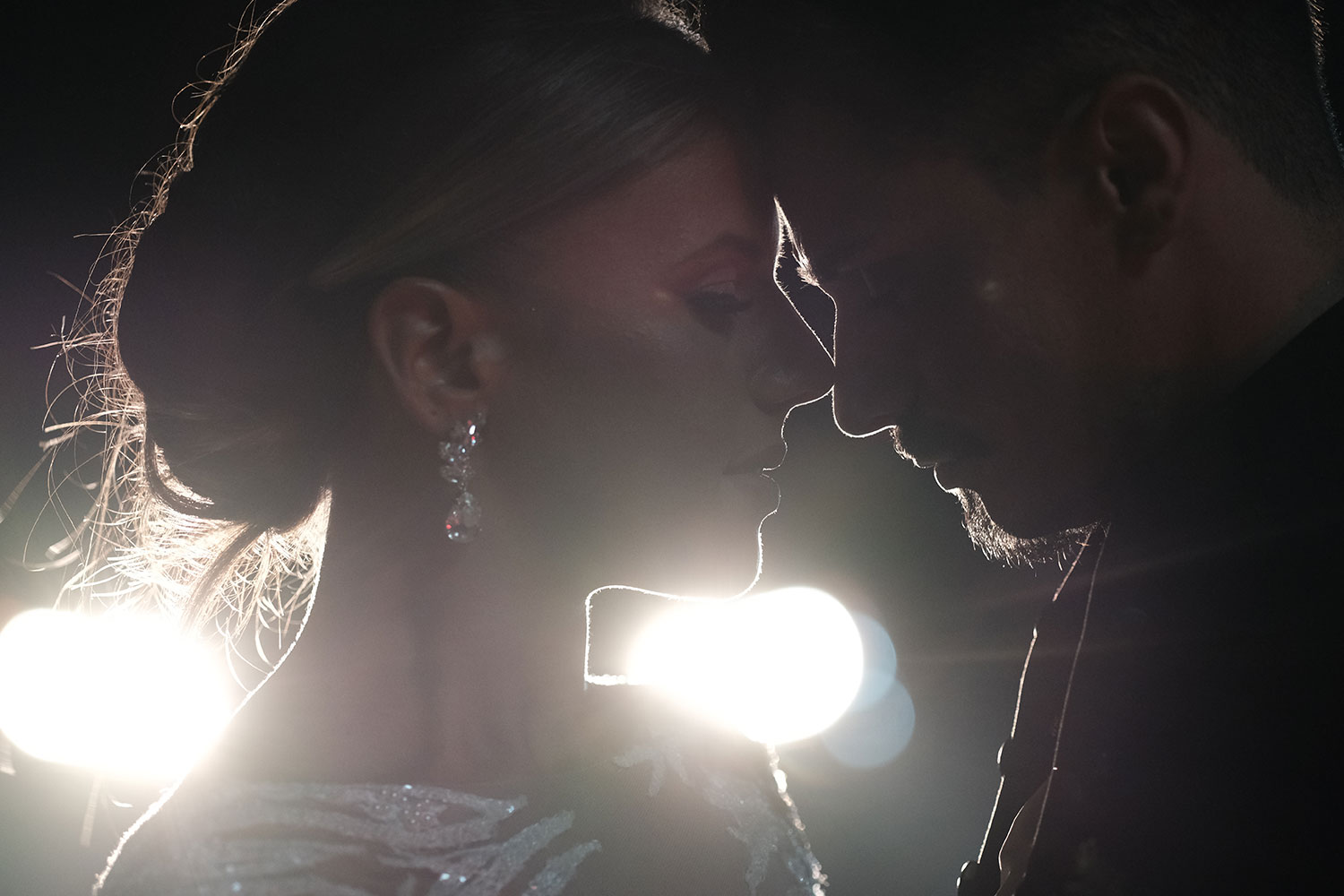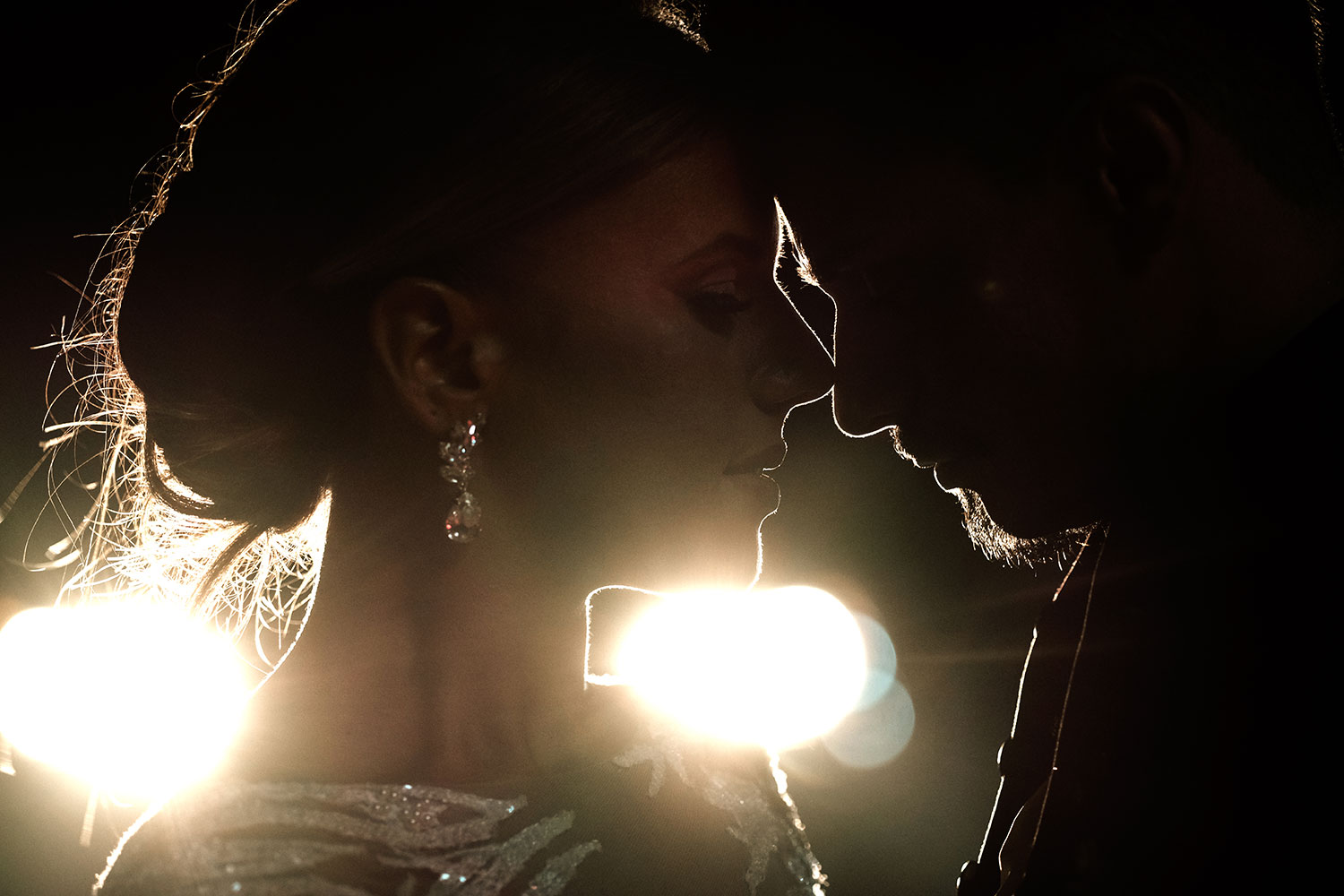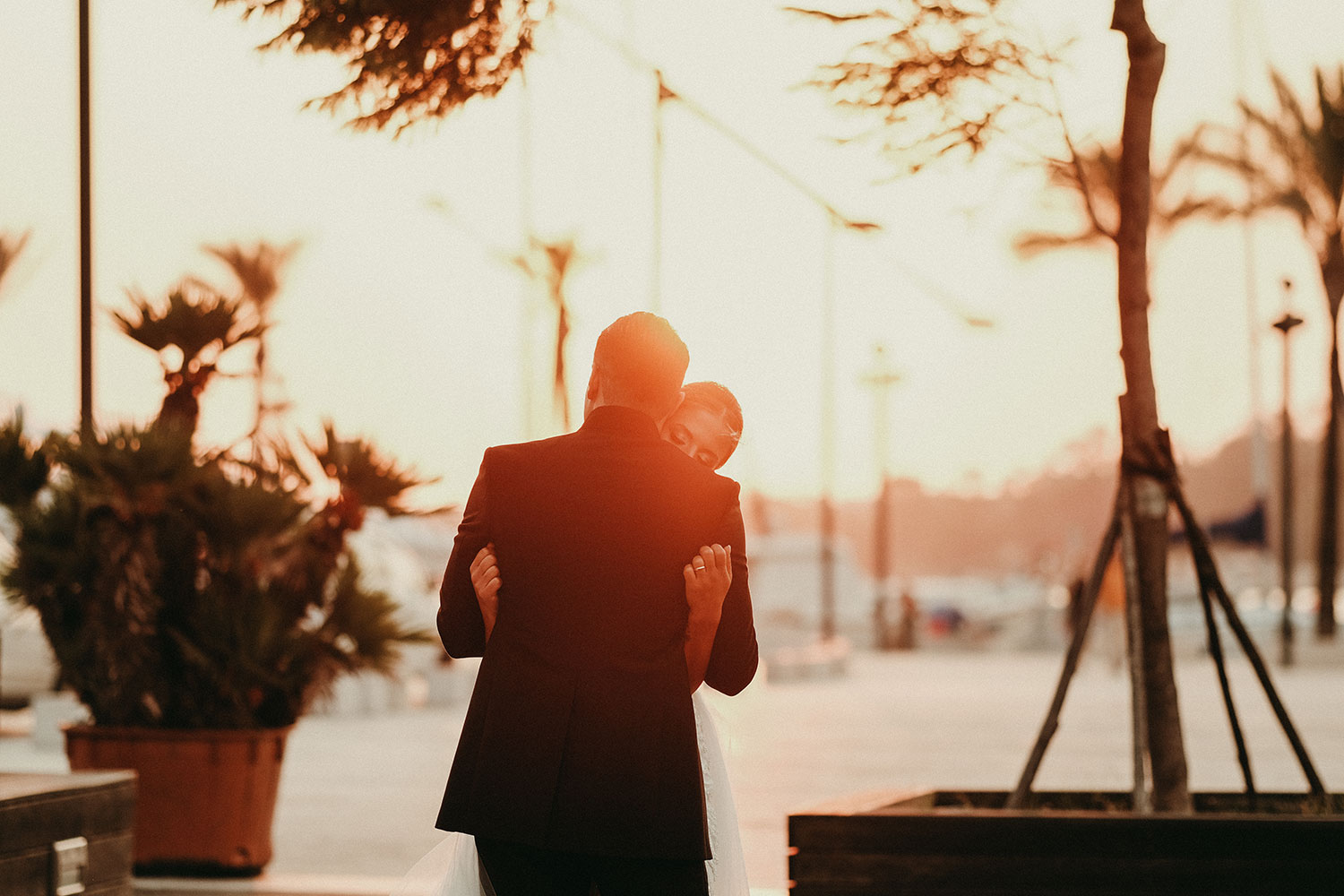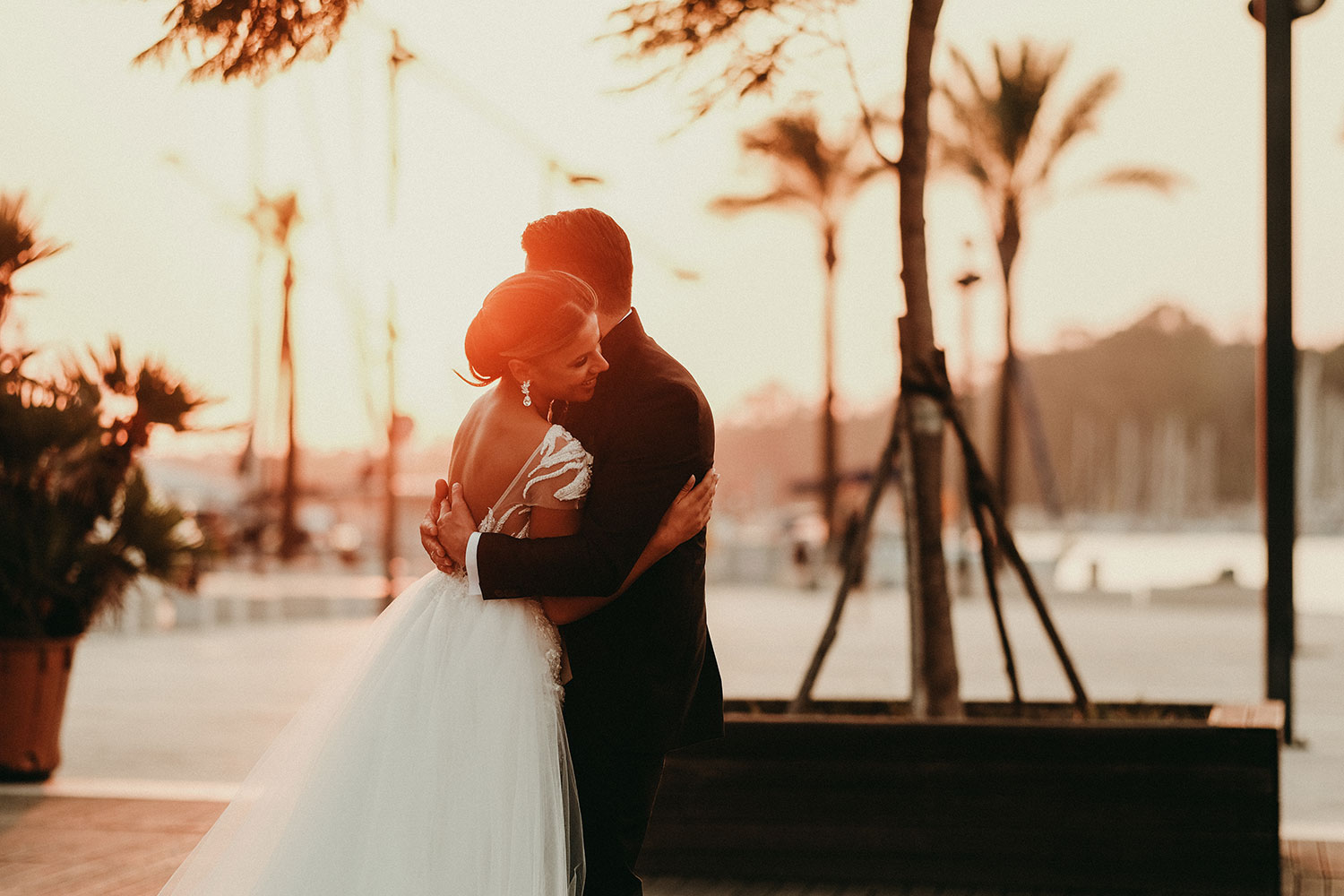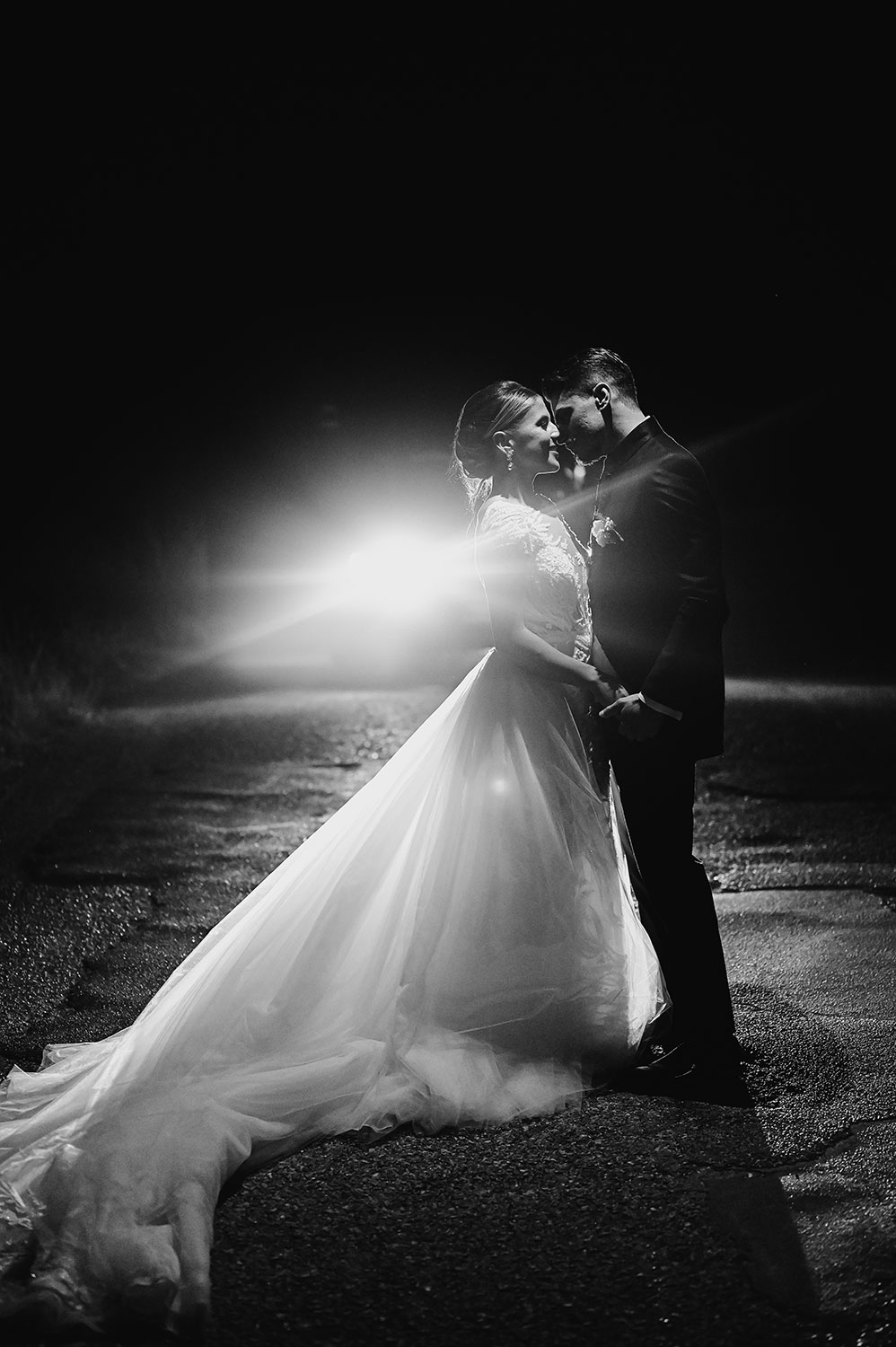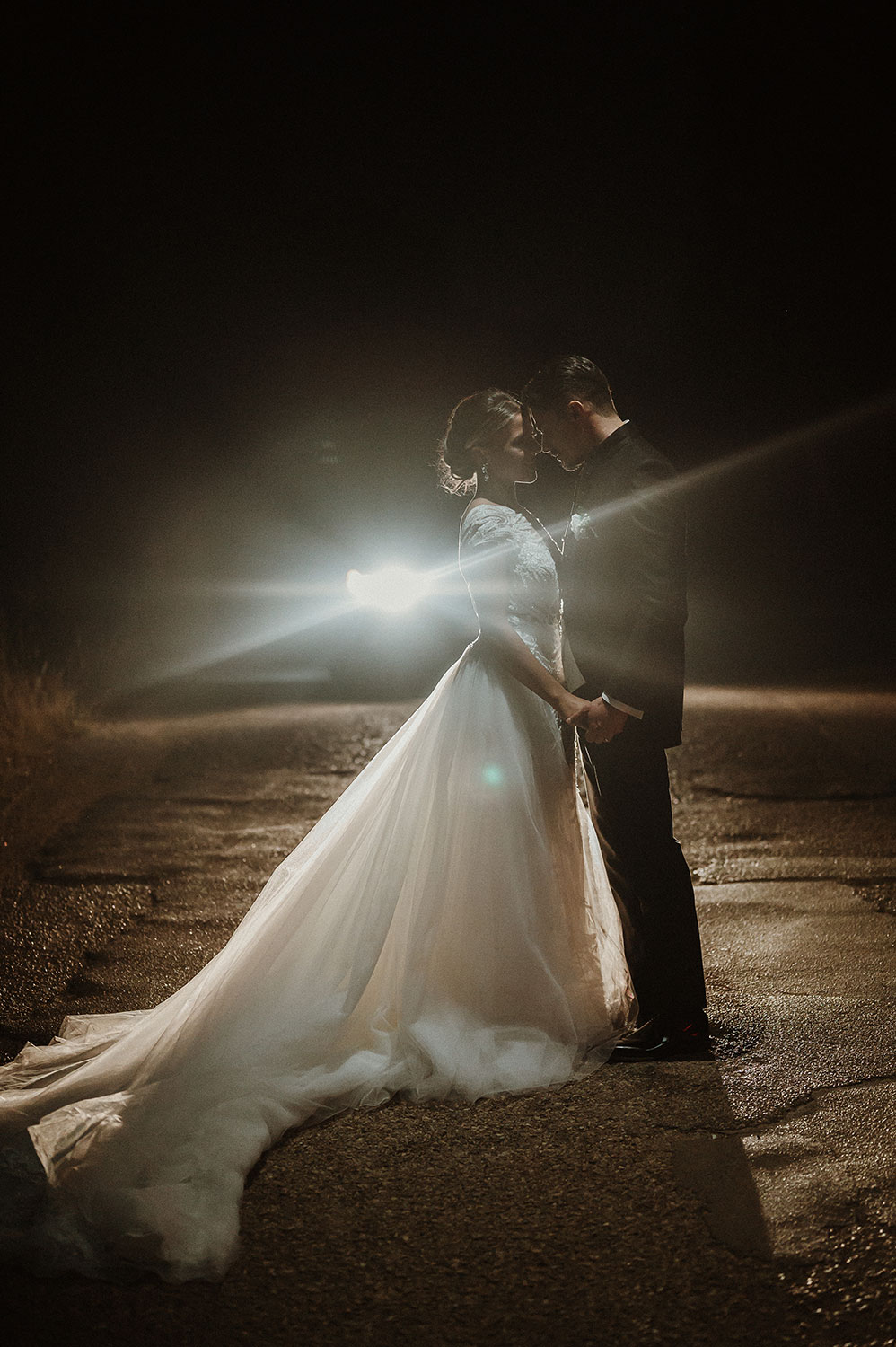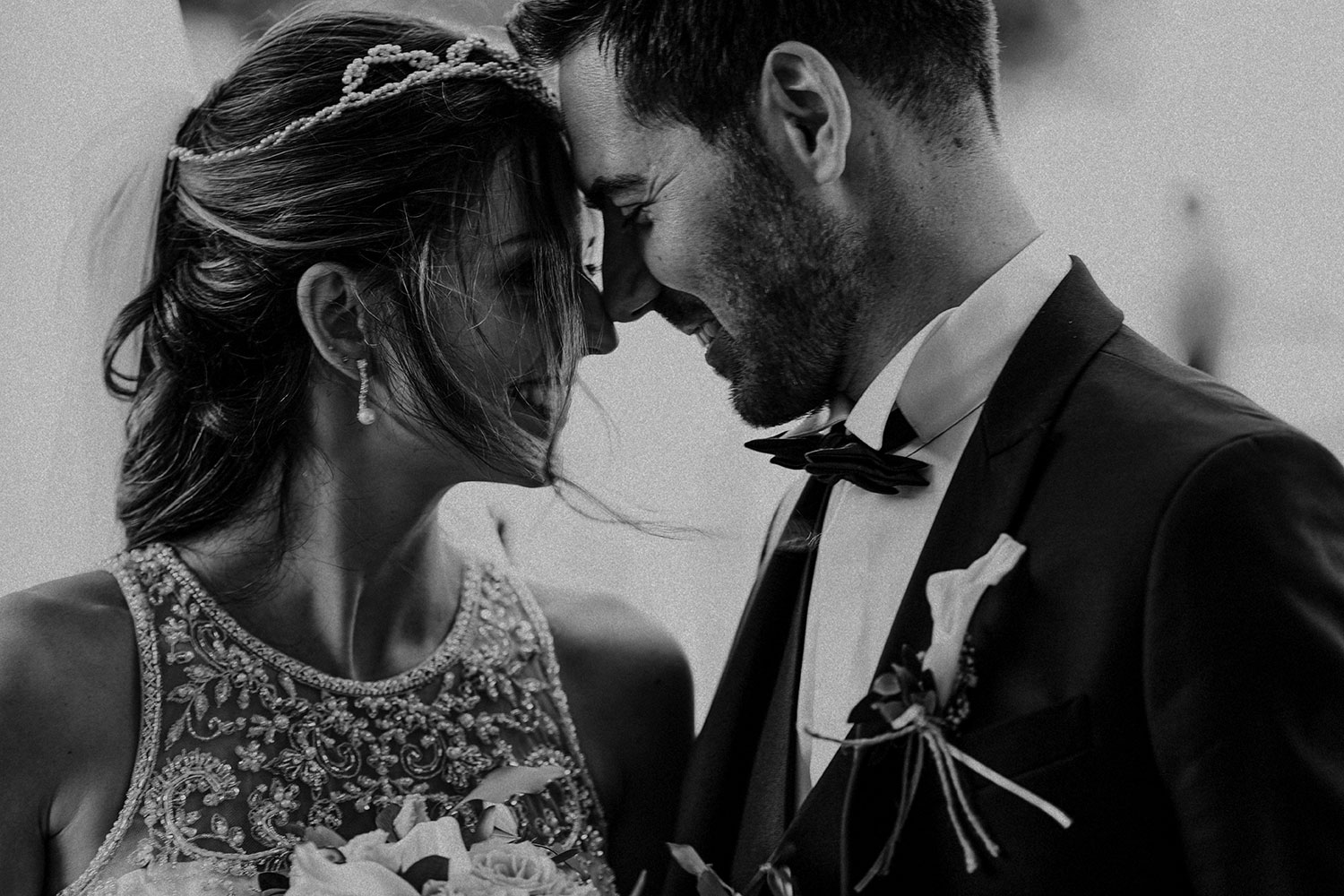Wedding photoshoot tips and tricks
The Fujinon XF 90mm F2
I currently use both systems. I have always used Nikon, shooting with a D4S full-frame reflex. Still, since one year I have been using Fuji, and I am about to make the final switch to this system, both for portability and not to go home exhausted with the weight of the equipment, but also for the overall outstanding performance.
In this photo, I used the Fuji X-T3 and the XF90mm F2 at maximum aperture. I love this optic because it is a portrait prime lens pushed to give me everything that a tele zoom cannot give me. In weddings, I use Fuji prime lenses from 16mm to 23mm to 35mm, and then, the 90mm. The latter does not distort and is very gradual in the transitions between focus and out of focus, and at the same time, returns a shallower depth of field and greater three-dimensionality to the image, being really super sharp at full aperture.
By observing the image well, you realize that the engraving is really high, but this doesn’t translate into excessive micro-contrast or abrupt transitions between lights and shadows. This, for me, is harmony. And these are the characteristics that I was searching for on a portrait lens. Fujinon is very careful, and very good at making lenses for the APS-C system.
And I am very impressed with both the extreme portability and the AF speed. Little can be said about this because it is very well done and is dedicated to an audience of photographers mostly dedicated to portraits and possibly for all those purposes where a canvas is needed. I find the 135mm equivalent an extremely versatile focal length, well over 85mm.
It can be used for outdoor portraits, for events (concerts, sports where you are close), for narrow landscaping, for isolating objects and also for close up if combined with an extension tube.
How I shot this photo
In this shot, we used the high beams of a car in the background, and the bottom led lights of the Mavic Pro 2 hovering above plus the light of another car positioned in the side.
The photo was taken at 1/80 sec; f/2.0; ISO 2000. In post-processing, I lowered the blacks and shadows to reduce the noise and raised the mid-tones. I am attaching the original image for comparison.
What I love about Fuji in comparison to Nikon is the feeling of returning to the days of film, giving you that pleasure of shooting. I really like Fuji for giving me the feel of a cinematic camera, at a photographic level and as well as at a video level. The colors are exactly as the eyes see them. Not only realistic colors but also real, beautiful and vivid.
FUJIFILM’s 80 years of experience and research bring attention to color reproduction that only a film manufacturer can afford.
In post-processing I use Lightroom, and I am very happy as every time I notice the parameters are as I want, it does not miss a shot: sometimes I use split toning to make the colors on the yellow and make everything more cinematic.
Here you can see the final result:
“Tips and Tricks” for a wedding photoshoot
Now a few notes on how to make a couple to pose, and how to direct them during the photo shoot. I make some appointments in the studio, at least four so that they arrive prepared on their wedding day. I show them my shots, my type of work, and they choose me for this. I tell them simply to be themselves, even if they are posing, I want images with natural feelings and expressions. When customers feel comfortable, they seem comfortable. When they are relaxed, they look better, and you can bet they will buy more of what the photographer is selling. When meeting customers for the first time, please pay close attention to their characteristics. I subtly examine their skin, their faces, their noses, their minds and mannerisms. I begin to think about how to lay them, how to accentuate their positive features and minimize the features that make them uncomfortable. I also consider lighting and exposure problems influenced by their skin types.
Directing subjects takes practice. It is a particularly difficult challenge for new photographers.
During portraits of the couple, I start by putting my subjects in the right starting position. Think about how to create a frame for a scene. I find the right setting with the right background and optimal lighting. Then I place my subjects in the chosen area and leave them free. I have already thought about how the lighting will work with their skin, what the background will look like in the final images, and how the complete scene will work. Having the technical side fixed helps me go to the next step: making them interact naturally. All I have to worry about is the communication between the bride, groom and me.
Usually, I take the couple away from other people. During the portraits of the couple, I try to eliminate distractions such as groomsmen, bridesmaids, family and other guests. It is vitally important to separate them from the frenetic energy of the day so that they can be themselves.
Get a laugh
One of my favorite techniques for creating spontaneous and natural-looking images is to ask the bride and groom to close their eyes, bend over and kiss each other. Because their eyes are closed, they are always missing, and they end up kissing the forehead or eye or chin. Inevitably, they collide, laughing genuinely, and it’s the moment I’m looking for.
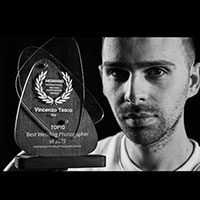
Vincenzo Tasco, born in Brindisi on 19-07-94, son of the well-known Brindisi photographer Damiano Tasco. Ventured into photography from an early age, continuing his father’s business. Over time he has managed to create a personal style that has led him to specialize in wedding photography, portraits, still lifes, reportage and fashion by attending masters and courses with great masters of photography in Italy and abroad. The continuous search for perfection and the emotional impact of the images, as well as attention to the smallest details, are nothing more than the synthesis of his sensitivity, which is expressed through continuous study and meticulous research. His goal has always been to offer his customers a 5-star experience… an experience in which no detail is ever too small, or insignificant, to be told and photographed.

